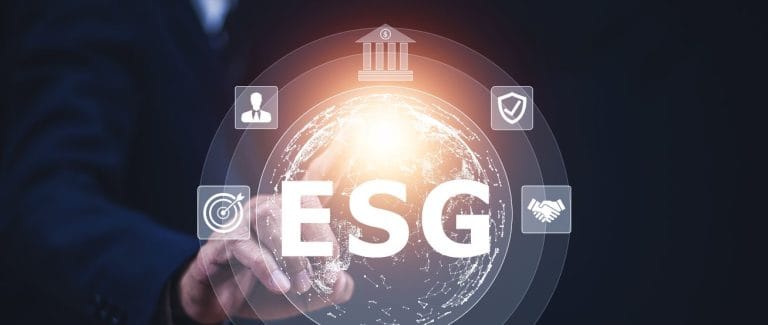
Workspace Decluttering Tips for Busy Executives
4 mins readIn the fast-paced corporate world, executives often juggle tight schedules, overlapping meetings, and a constant influx of information. Amid this whirlwind, physical and digital clutter can easily build up—stealing time, sapping mental clarity, and silently undermining productivity. For busy executives, a cluttered workspace is more than just a visual nuisance; it becomes a strategic disadvantage.
Decluttering the workspace is not about aesthetic minimalism alone—it is about reclaiming mental bandwidth, sharpening focus, and aligning your environment with the high-level decisions you’re expected to make. Whether you’re overseeing a department or steering an entire enterprise, applying practical decluttering strategies can help you manage your time better and improve efficiency. This guide explores proven workspace decluttering tips tailored specifically for executives who need clarity, control, and cognitive space to lead effectively.
Why Workspace Decluttering Matters for Executives
The correlation between a tidy environment and mental performance is well-documented. Neuroscience research confirms that physical clutter competes for your attention and cognitive resources. For executives who frequently toggle between strategic planning, problem-solving, and high-stakes decision-making, this cognitive overload can lead to poor prioritization and even decision fatigue.
Key reasons workspace decluttering matters for executives include:
- Reduced stress and anxiety: A cleaner environment fosters a sense of control.
- Improved decision-making: Mental clarity enhances strategic thinking.
- Time efficiency: Less time is wasted looking for documents or tools.
- Enhanced professionalism: A neat office communicates authority and reliability.
- Better focus: Reducing distractions allows for deeper work.
Decluttering is more than tidying—it is a performance optimization strategy for leaders.
Assessing Your Current Workspace
Before decluttering, you must assess what’s currently hindering your efficiency. Begin by taking a walk around your office and noting:
- Excess paper piles
- Obsolete technology or cables
- Items with no daily use
- Duplicate tools or devices
- Overflowing file cabinets or desk drawers
Evaluate not only what is visible but also digital clutter such as:
- Unread emails
- Disorganized digital folders
- Desktop files
- Unused cloud documents
Understanding what’s creating “noise” in your environment allows you to declutter with purpose.
Step-by-Step Guide to Workspace Decluttering
-
Start with a Clean Slate
Clear your desk entirely. Remove everything from the surface and drawers. Starting fresh helps you rethink the placement and necessity of each item.
-
Use the Four-Box Method
Create four zones or containers:
- Keep
- Relocate
- Donate/Dispose
- Archive
Handle every item once and place it in the appropriate box. Be ruthless—executives must prioritize functionality over sentimentality in the workspace.
-
Digitize and Eliminate Paper
Paper is a major source of clutter. Use a scanner or smartphone app to digitize important documents. Store files securely on cloud platforms with labeled folders. Shred what you no longer need.
This is where structured planning comes into play. Consider enrolling in the Certified Professional Planner Course to learn advanced organizational techniques that streamline paper and document management systems in executive workflows.
-
Invest in Smart Storage Solutions
Use filing cabinets, labeled trays, and drawer organizers. Vertical shelving saves space and keeps documents within reach. Avoid open baskets or trays that invite clutter.
-
Implement a “One-Touch” Rule
Train yourself to deal with items once—whether it’s responding to an email, reading a document, or placing an item back. This prevents pileups and promotes momentum.
-
Declutter Your Digital Space
Your digital workspace is as critical as your physical one. Organize your inbox into folders, unsubscribe from irrelevant mailing lists, and delete or archive unnecessary files. Use naming conventions and cloud tools to maintain consistency.
-
Create an End-of-Day Routine
At the close of business, spend 5–10 minutes resetting your workspace. File away documents, close unnecessary browser tabs, and clear your desk. This simple habit supports a strong start the next day.
Delegating Decluttering Tasks Effectively
Executives don’t need to handle every decluttering task alone. Administrative assistants or office managers can be empowered to support this initiative—provided they understand your priorities. If delegation is a growth area, the Successful Planning, Organising & Delegating Course offers the right foundation for balancing authority and execution within your team.
Train your support staff to:
- Understand the systems you’re putting in place
- Maintain digital and paper organization
- Handle archiving and shredding procedures
- Keep shared spaces functional
Strategic delegation ensures consistency without consuming your time.
Sustaining a Decluttered Workspace Long-Term
Decluttering is not a one-off project; it is an ongoing discipline. Here are practices to keep your executive environment organized:
- Set Weekly Reviews: Every Friday, reassess desk and drawer items.
- Limit What Enters: Say no to unnecessary promotional items, swag, and duplicated office supplies.
- Digital Check-ins: Schedule monthly digital cleanups of folders, drives, and inboxes.
- Adopt Lean Principles: Apply lean thinking to eliminate waste in processes and materials.
Consistent review and maintenance protect you from slipping back into old patterns of clutter.
Executive Tools That Support Decluttering
Incorporating the right tools can significantly enhance your decluttering efforts. Recommended tools include:
- Cloud storage solutions (Google Drive, OneDrive, Dropbox)
- Password managers to reduce post-it clutter
- Digital note apps (Evernote, Notion)
- Label makers for quick filing
- Wireless charging docks to reduce cable clutter
Opt for tools that align with your tech preferences and daily workflow.
Mindset Shift: From Cluttered to Intentional Leadership
Ultimately, decluttering is about moving from reactive management to intentional leadership. A clean workspace reflects a leader who is in control—not just of their office, but of their priorities, energy, and focus.
Executives often operate in environments where clarity is a rare luxury. By curating your physical and digital environment to remove what doesn’t serve your goals, you reduce noise and create space for strategic thinking. This can be the difference between a reactive manager and a visionary leader.
Workspace decluttering is not about chasing perfection but about creating an environment that enables peak performance. For busy executives, this means building systems that reduce stress, eliminate wasted time, and promote thoughtful leadership.
You don’t need to master every step in one day. Begin with small changes—one drawer, one email folder—and work toward broader systems over time. Through regular habit-building and strategic delegation, your workspace can evolve into a platform for productivity and executive clarity.
To enhance your ability to implement these strategies at a professional level, consider enrolling in the Certified Professional Planner Course or the Successful Planning, Organising & Delegating Course. Both courses provide frameworks, tools, and insights to optimize executive performance through smarter organization and leadership planning.




